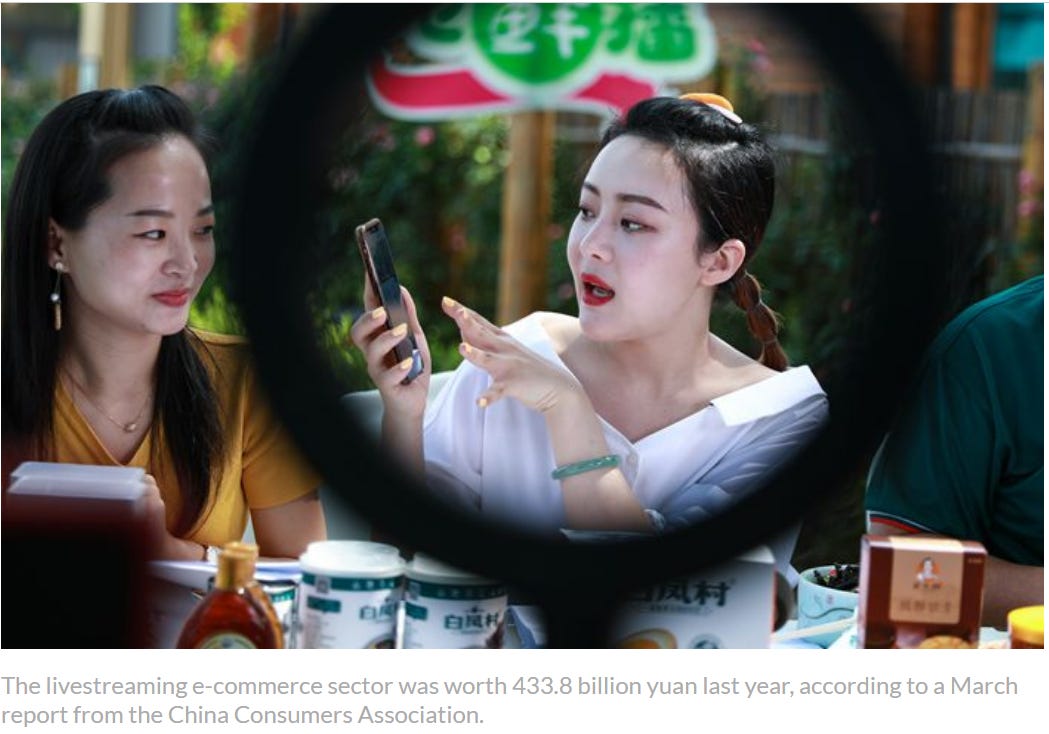Sales of books, tutorials and classes of AI generated content (AIGC) for business have surged in China, writes Amber Zhang
While China’s AI commercialization path is still largely experimental, those making that most money from AI aren’t building tools or products—they're selling courses. This signifies not only where demand is in China but reveals a fundamental attitude that dominates the Chinese population —AI education, will give them an edge to monetize new opportunities.
Currently this is focussed on live streaming e-commerce. Live-streaming platforms like Douyin and Kuaishou continue to expand at a rapid rate.
How is this radically different from the Western systems? Search and online ads continue to dominate marketing strategies in North America, Europe, and Oceana.
In China, “you need to put the items right in front of the customers, engage them, and walk them through why they need to buy with all your enthusiasm” says Zhang.
DeepSeek shook the industry earlier this year with a model that it said operated at substantially lower costs than U.S. rivals. In spite of the flourish of hype that surrounded DeepSeek’s debut on WeChat, merchants in China were already replacing human livestreamers with AI-generated digital avatars, for around $56 USD per avatar driving real sales, albeit products sold by AI hosts are usually cheap utility products.
Reuters reports that when Chinese artificial intelligence startup Zhipu AI unveiled a free AI agent early this year, it heavily promoted e-commerce as a core use case. AutoGLM is pitched as a human-like intern that can browse the internet and complete basic tasks. Now it represents one of the clearest paths to AI monetization in China.
A more sophisticated digital human avatar, along with operational training, is sold as a package with a price tag of around 700 USD. Prior to going live, users feed the software with scripts. In three seconds, the software can generate ten thousand words of dialogue. Then they select scenes, match them with corresponding product links, set up scheduled playback, and create a digital human live stream that can loop indefinitely. For their live streams that sell coupons for dining, snacks, and offline stores, viewers typically stay for no more than a minute. Some make a purchase and leave within 30 seconds. Perhaps the buyer doesn't realize it's a digital human. Even if they did, it doesn't matter. A sale has been concluded.
#ChinaAI
#livestreaming
#AI generated content
#AIGC
#Douyin
#Kuaishou
#DeepSeek
#avatars
#e-commerce







That sums it up well. The theme of the post is the surge in using AI generated avatars (digital twins) in china, and the point is that it reflects the growing problem that Chinese face in finding work and income in a declining economy. The video on Internet Slop is interesting, thanks Rian.
Thanks for the question Eric. I can say that many are fly by night offered by rank amateurs looking to make a buck - one analysts experience with the offferings is here https://mp.weixin.qq.com/s/5T0X92WXmxUYlbZ1x7q8VQ. Not to say that there aren't good ones. Typical offerrings are tutorials and online classes on the practical use of AIGC in business, AI drawing for marketing, an overview of chatGPT and AIGC developments, practical prompts for the Midjourney and so on. Searching for the term "AIGC" in Amazon's book department reveals all the items on the first few pages are from China. My point is the tremendous growth of AI-generated digital avatars in live-streaming in China as people seek work in a country where it is drying up at a rapid rate.